
Most photos need editing before they’re sent off. Lightroom is widely used for this purpose, but its subscription cost, cloud reliance, and certain limitations have made it a non-starter for some photographers.
I tested five alternatives to see how they handle photo editing differently. Some software utilizes AI to expedite routine edits, while others focus on precise RAW processing, and a few offer layer-based workflows or free, open-source options.
Each option has its own strengths, limitations, and hardware requirements.
This article breaks down each software’s offerings, from key features to performance and potential drawbacks. I aim to provide a clear overview for photographers looking for reliable, flexible, cost-effective alternatives to Lightroom.
Let’s see what’s around.
Key Takeaways From Adobe Lightroom Alternatives
- Many alternatives offer one-time purchase options or lower subscription fees, providing budget-friendly solutions compared to Lightroom’s subscription model.
- Programs like PhotoDirector 365 and Luminar Neo include AI tools for tasks such as sky replacement, portrait retouching, noise reduction, and background removal, reducing manual editing time.
- Capture One Pro and RawTherapee excel in RAW file processing, offering precise color control, detail retention, and advanced noise reduction.
- ON1 Photo RAW and Luminar Neo enable layer-based editing, masking, and creative enhancements, providing photographers with flexibility in composition and stylistic adjustments.
- Some alternatives provide integrated cataloging, keyword management, and browsing capabilities, while others (like RawTherapee) rely on external programs for workflow management.
- AI-powered programs often require modern hardware with sufficient processing power and dedicated graphics memory for optimal performance.
- Capture One Pro and RawTherapee have steep learning curves, while PhotoDirector 365 and Luminar Neo are more accessible for beginners.
- Some alternatives, such as PhotoDirector 365 and Luminar Neo, offer mobile apps for basic editing and syncing, whereas others remain desktop-only.
- Many alternatives combine multiple editing tools, from retouching and color grading to HDR processing and focus stacking, supporting diverse photography workflows.
- Photographers can select alternatives based on workflow needs, hardware, and style preferences, ensuring high-quality results without relying solely on Lightroom.
My Time with the 5 Best Adobe Lightroom Alternatives
CyberLink PhotoDirector 365
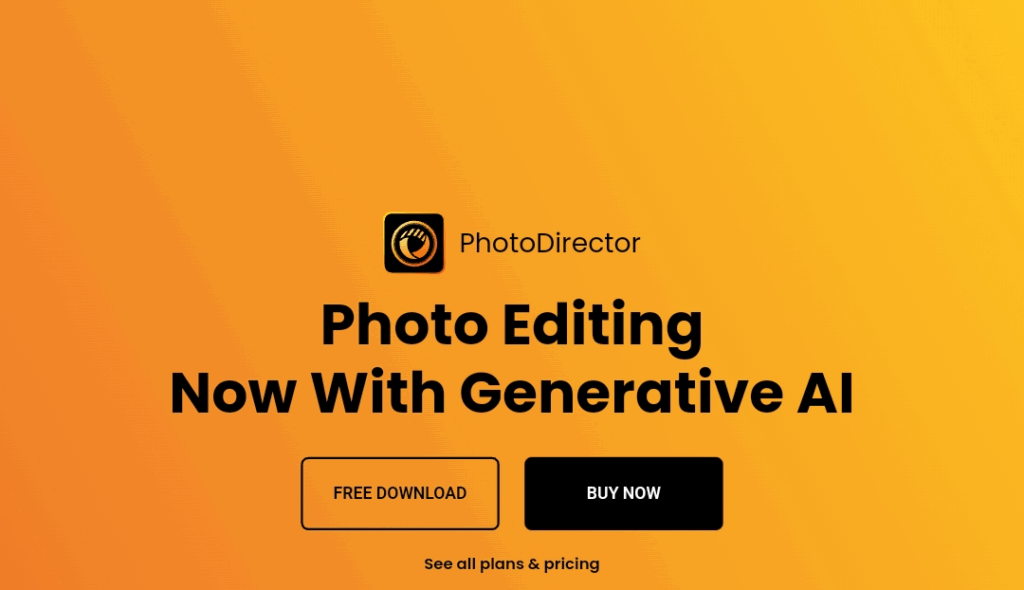
PhotoDirector 365 targets content creators with AI-powered automation and social media optimization. The annual subscription typically costs $60 but often drops to $40 during promotions, making it one of the most affordable professional options.
Key features:
- AI sky replacement with automatic lighting adjustments
- Portrait retouching with natural skin enhancement
- Object removal and background replacements
- Built-in stock photo library access
- Integrated video editing capabilities
PhotoDirector 365 Performance
PhotoDirector impressed me with its automation capabilities during my testing period. The AI sky replacement technology matches lighting conditions and perspective automatically, producing convincing results that would require extensive manual work in my previous Lightroom workflow. Portrait tools enhance skin naturally without the artificial smoothing that plagued many competitors I tested.
The interface welcomed me without overwhelming my established editing habits. Tools are logically organized, and clear visual feedback matches my expectations. I produced professional-looking results within my first editing session, making it ideal for my transition from basic apps.
Performance exceeded my expectations during intensive testing sessions. AI operations were completed quickly on my mid-range hardware, and batch processing efficiently handled large volumes of my shooting trips. The integrated video editing adds value to my mixed media projects.
However, I found the manual controls limiting for my advanced editing needs. Color wheels and curves lack the precision that my professional color work demands. Some AI effects produce obviously processed looks that require careful application to avoid detection in my client work.
Pros:
- Intuitive interface requires minimal learning time
- Fast AI processing on modern hardware systems
- Excellent value considering the comprehensive feature set
- Regular updates introducing new AI tools
Cons:
- Limited manual control for precision adjustments
- AI effects sometimes produce unrealistic results
- Subscription model, despite competitive pricing
- Color grading tools lack professional precision
Capture One Pro
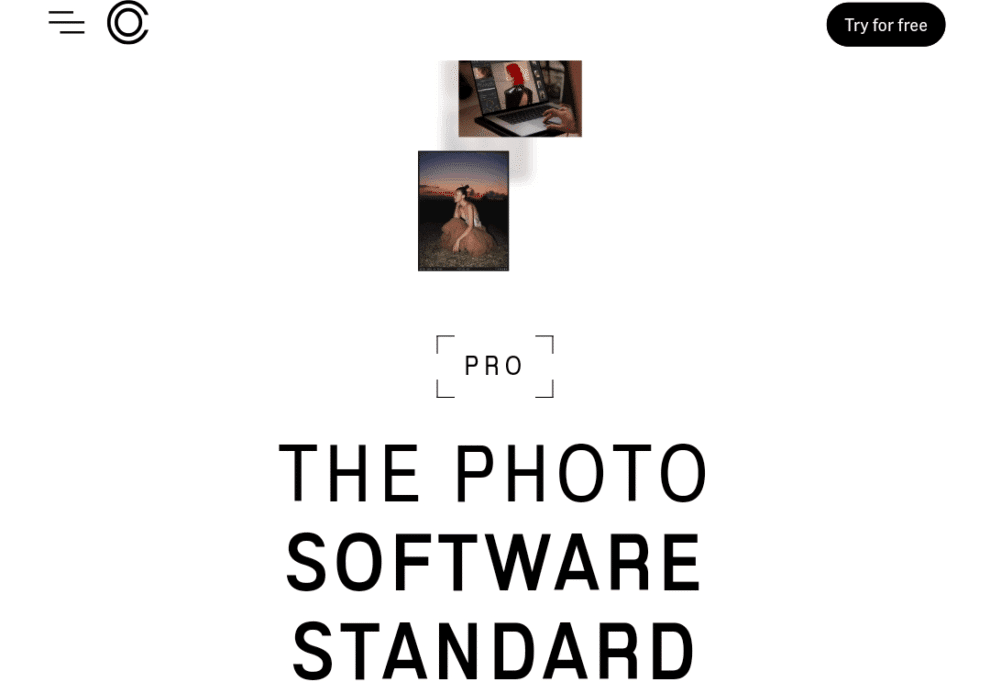
Capture One Pro sets the professional standard for RAW processing quality. Studio and fashion photographers consistently praise its color accuracy and detail retention capabilities, often surpassing Lightroom’s output.
Key features:
- Industry-leading RAW processing algorithms
- Advanced color grading with precise control wheels
- Professional tethering for studio workflows
- Customizable workspace layouts and tools
- Session-based organization for project work
Capture One Pro Performance
The image quality difference became immediately apparent during my side-by-side testing sessions. Capture One consistently rendered cleaner shadows, smoother color transitions, and more natural skin tones than competing programs I evaluated. The processing engine particularly excels with my specific camera brands, though all my manufacturers benefit from its advanced algorithms.
Color grading capabilities surpass every alternative I tested during my evaluation period. The color wheel interface provides unprecedented control over hue, saturation, and luminosity adjustments that my professional work requires. I appreciate the precision and flexibility these tools offer for my commercial projects.
Tethering functionality operates flawlessly with my supported camera models. Focus on and capture images directly during studio sessions through the software interface. Custom workspace layouts adapt efficiently to my different shooting scenarios and client requirements.
The learning curve presented the most significant obstacle during my transition period. Capture One assumes familiarity with professional photography terminology and advanced workflows, which took me weeks to master. The abundance of options and settings initially overwhelmed my photography habits.
My modern hardware specifications are significantly demanding. Complex operations tax my system resources, though the superior image quality justifies the requirements for my professional applications. My older backup computers struggle with demanding processing tasks.
Pros:
- Exceptional image quality and color reproduction
- Powerful local adjustment tools with accurate masking
- Reliable tethering capabilities for studio shooting
- Professional workflow features for commercial work
Cons:
- Steep learning curve intimidates beginners
- Expensive at $299 perpetual or $20 monthly subscription
- Interface complexity overwhelms casual users initially
- Resource-intensive performance on older systems
Skylum Luminar Neo
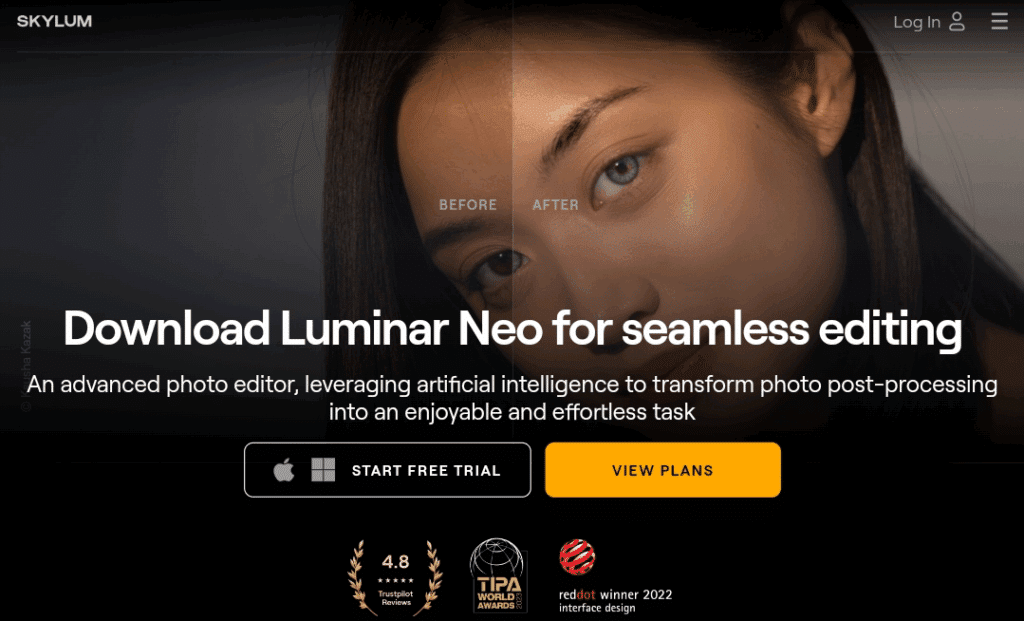
Luminar Neo pushes AI integration beyond any competitor while maintaining creative control. The lifetime license costs $119, with subscription options at $69 annually, positioning it between the budget and professional tiers.
Key features:
- AI-powered dust and spot removal automation
- Intelligent background replacement and masking
- Advanced noise reduction for high-ISO images
- Creative enhancement filters and effects
- Automated HDR processing with natural results
Luminar Neo Performance
The AI dust removal feature eliminated tedious manual work during my testing period. It automatically identified and removed hundreds of sensor spots across entire batches while preserving the image details that I needed. The natural-looking results would be nearly impossible to achieve manually in a reasonable time.
Creative enhancement tools actually improve my images; rather than applying heavy-handed effects, I avoid them. The Dramatic filter subtly enhances contrast and detail, creating intentional looks rather than processed appearances that suit my landscape photography style.
During testing, noise reduction capabilities exceeded my expectations significantly. High-ISO images from my older camera bodies showed remarkable improvement, with preserved fine detail and the natural texture I require. The AI algorithms distinguish between noise and legitimate image detail better than the traditional approaches I’ve used.
Unfortunately, system requirements limit accessibility for my older equipment. AI operations demand substantial processing power and dedicated graphics memory, which my backup systems lack. My older computers experience frustrating delays, interrupting my creative flow, particularly during batch processing operations.
Organizational features lag behind the dedicated catalog programs I need. Luminar Neo functions better as a processing tool than a complete workflow solution for my extensive image libraries. I typically require supplementary software for efficient organization of my shooting archives.
Pros:
- Cutting-edge AI tools save hours of manual work
- One-time purchase option available
- Outstanding noise reduction for difficult images
- Creative effects enhance rather than overwhelm photos
Cons:
- Requires powerful hardware for optimal AI performance
- AI tools occasionally produce inconsistent results
- Limited organizational and catalog features
- Major updates require additional payment
ON1 Photo RAW
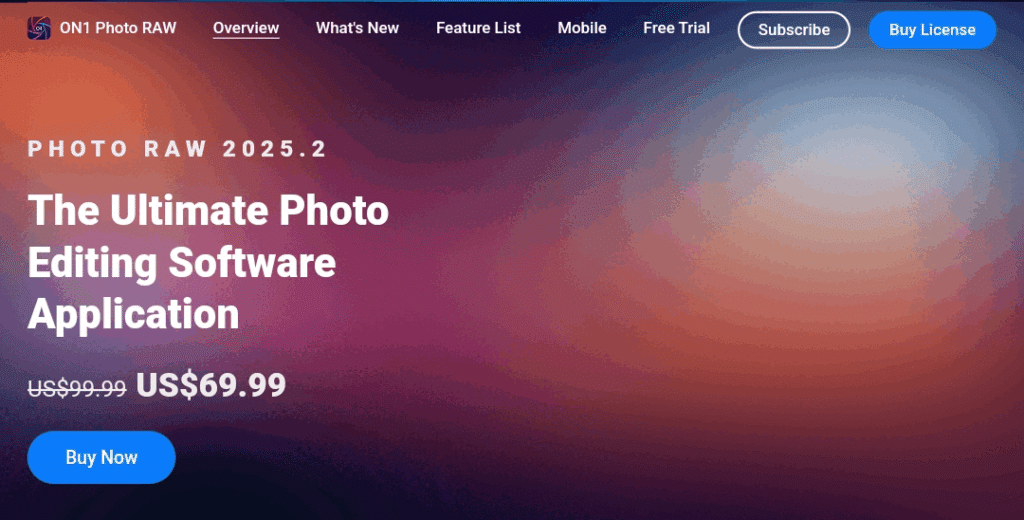
ON1 Photo RAW was formerly $99 but is now $69.99 for new users or $79 for upgrades. The MAX version costs money and offers comprehensive editing without requiring a subscription. The program combines processing, organization, and layer-based editing in one integrated package.
Key features:
- Non-destructive editing with unlimited adjustment layers
- Built-in focus stacking for macro photography workflows
- Comprehensive filter collection with film emulations
- Integrated browsing and keyword organization
- Local adjustments with advanced masking capabilities
ON1 Photo RAW Performance
The layers-based approach distinguishes ON1 from traditional RAW processors with which I’m familiar. I can apply multiple adjustments and creative effects while maintaining complete editability, which my workflow demands. This flexibility aligns with my photography style, which requires more creative control than standard development workflows offer.
Focus stacking functionality works excellently for my macro photography specialization. The automated alignment and blending process produced sharp results across the entire depth fields with minimal manual intervention from me. This feature alone justifies the purchase price for my macro photography work.
Organization tools handled my substantial image libraries reasonably well during testing. The browsing interface loaded thumbnails faster than Lightroom in many situations, and keyword management operated efficiently for my needs. However, advanced catalog features for my professional workflows remain limited compared to dedicated solutions.
Unfortunately, performance becomes problematic with my heavily layered compositions. Complex creative edits can slow the interface to frustrating levels on my hardware with limited memory. Simple adjustments process quickly for my basic needs, but elaborate projects test the program’s architectural limits.
The interface attempts to accommodate numerous tools within limited screen space, sometimes creating cluttered experiences that overwhelm me. During my learning period, I struggled to locate specific features among the various panels and options. A better organization could improve usability for users like me.
Pros:
- No subscription required for full functionality
- Powerful layers-based editing workflow
- Focus stacking automation for macro specialists
- Strong value proposition for the feature set
- Regular free updates throughout ownership
Cons:
- Performance degrades with complex layer compositions
- The interface feels crowded with numerous panels
- Some tools lack polish compared to specialized competitors
- Learning curve for photographers new to layers
RawTherapee
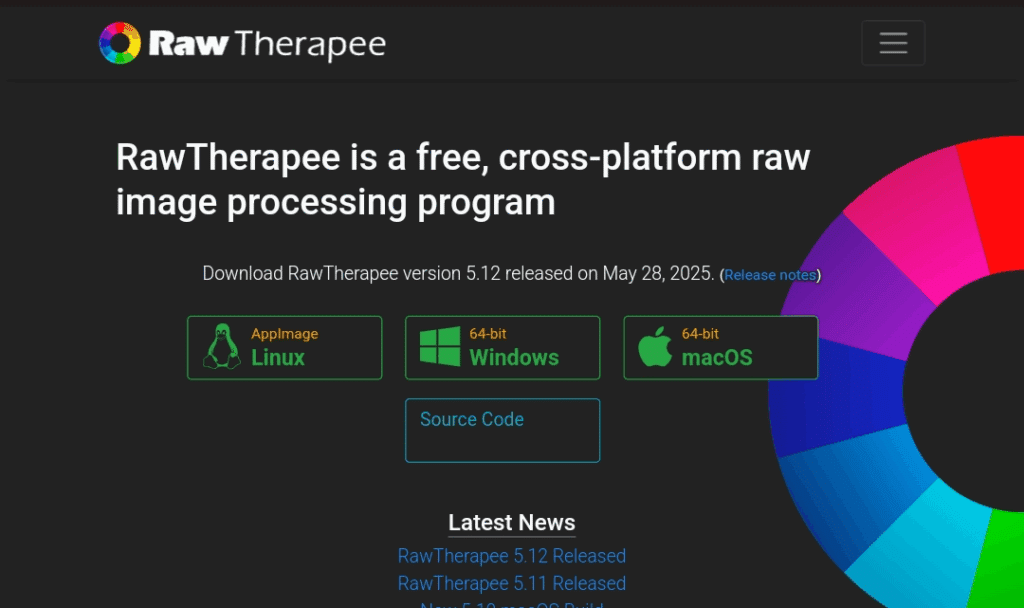
RawTherapee demonstrates that exceptional photo editing requires no financial investment. This open-source alternative provides professional-grade RAW processing with incredible technical depth and complete freedom from licensing restrictions.
Key features:
- Completely free with unrestricted functionality
- Extensive RAW processing parameter control
- Advanced noise reduction and sharpening algorithms
- Support for virtually every camera RAW format
- Active community providing ongoing development
RawTherapee Performance
The technical depth available surpasses most commercial alternatives I evaluated by substantial margins. Every aspect of RAW processing can be adjusted with scientific precision and mathematical accuracy that appeals to my technical background. I can achieve remarkable results through the patient application of available tools.
Noise reduction algorithms compete directly with the best commercial implementations I tested. Careful adjustment of the numerous available parameters improves my high-ISO images, and my time investment in these tools pays substantial dividends in my final image quality.
Community support effectively compensates for the initial concern about the absence of commercial backing. Forums offer extensive tutorials, custom preset collections, and technical assistance from experienced users, which greatly aided my learning process. The open-source nature ensures continued development regardless of corporate business decisions.
However, the learning curve intimidated me significantly during my initial testing period. The interface assumes deep technical knowledge without guiding newcomers like me transitioning from Lightroom. I required weeks to become proficient with the available tools and concepts.
Organizational features are not built into RawTherapee itself, which creates problems for my workflow. I must rely entirely on external programs for catalog management and image browsing functionality. This fragmented workflow doesn’t suit my preference for integrated solutions.
Pros:
- Absolutely free with no feature limitations
- Exceptional technical control over processing parameters
- Regular updates from dedicated volunteer developers
- Extensive documentation and community tutorials
- No vendor lock-in or subscription concerns
Cons:
- The very steep learning curve intimidates most users
- Interface design feels outdated compared to competitors
- No organizational or catalog management features
- Requires significant time investment for mastery
Wrapping Up
Reviewing these five Adobe Lightroom alternatives highlights the diversity of tools available for photographers with varying needs and priorities.
CyberLink PhotoDirector 365 simplifies routine edits with AI automation, while Capture One Pro remains the professional standard for color accuracy, RAW processing, and tethered studio workflows. Skylum Luminar Neo emphasizes creative AI enhancements, requiring capable hardware for optimal performance.
ON1 Photo RAW offers a comprehensive, layers-based editing workflow with built-in organizational tools, although complex projects can strain system resources. RawTherapee demonstrates that high-level RAW processing is possible without subscription costs, although it requires a steep learning curve and external software for catalog management.
Evaluating these programs across features, pricing, and workflow suitability shows that high-quality photo editing does not rely solely on Lightroom. So please select an alternative that matches their editing style, technical requirements, and budget while maintaining professional results.
Frequently Asked Questions (FAQs) on Adobe Lightroom Alternatives
1. What are the main reasons to switch from Lightroom?
- Many photographers seek alternatives due to Lightroom’s subscription cost, cloud dependency, or desire for more advanced RAW editing tools. Some also prefer software with AI-powered features or one-time purchase options.
2. Which Lightroom alternative is best for beginners?
- CyberLink PhotoDirector 365 is an excellent choice for beginners. Its intuitive interface and AI-assisted tools simplify everyday editing tasks without a steep learning curve.
3. Are there free Lightroom alternatives?
- Yes. RawTherapee is a completely free, open-source RAW editor that offers professional-grade features, making it ideal for those on a budget.
4. Which alternative is best for professional color grading?
- Capture One Pro is recognized for its superior color accuracy and advanced color grading tools, making it suitable for professional photographers.
5. Can Lightroom alternatives handle RAW files?
- Most professional alternatives fully support RAW file editing and non-destructive workflows, including Capture One Pro, Luminar Neo, ON1 Photo RAW, and RawTherapee.
6. Do these alternatives offer cloud storage like Lightroom?
- Not all. Lightroom integrates cloud storage by default, while alternatives like Capture One and RawTherapee primarily focus on local storage. Some, like Luminar Neo, offer optional cloud services.
7. Are there mobile versions of Lightroom alternatives?
- Yes. PhotoDirector and Luminar Neo provide mobile apps for basic editing and syncing. ON1 Photo RAW also offers limited mobile editing capabilities.
8. Which software offers AI-powered editing tools?
- Luminar Neo and CyberLink PhotoDirector 365 include AI tools for sky replacement, portrait retouching, and background removal.
9. Can I switch from Lightroom without losing my catalog?
- Most alternatives allow importing Lightroom catalogs or exporting RAW files and edits to maintain workflow continuity, though some features may require adjustments.
10. Are one-time purchase options available?
- Yes. ON1 Photo RAW and Luminar Neo offer perpetual licenses, while Adobe Lightroom requires a subscription.
